Watershed Water Quality Sampling
Watershed Water Quality sampling
Throughout the summer 15 sites around the Lakelse Watershed are tested using a YSI ProDSS Water Quality Meter. We record temperature, dissolved oxygen, pH, turbidity, conductivity and pressure which all help to determine the health of the waterbody. Four locations on the lake are also sampled by boat.
WATERSHED SAMPLING

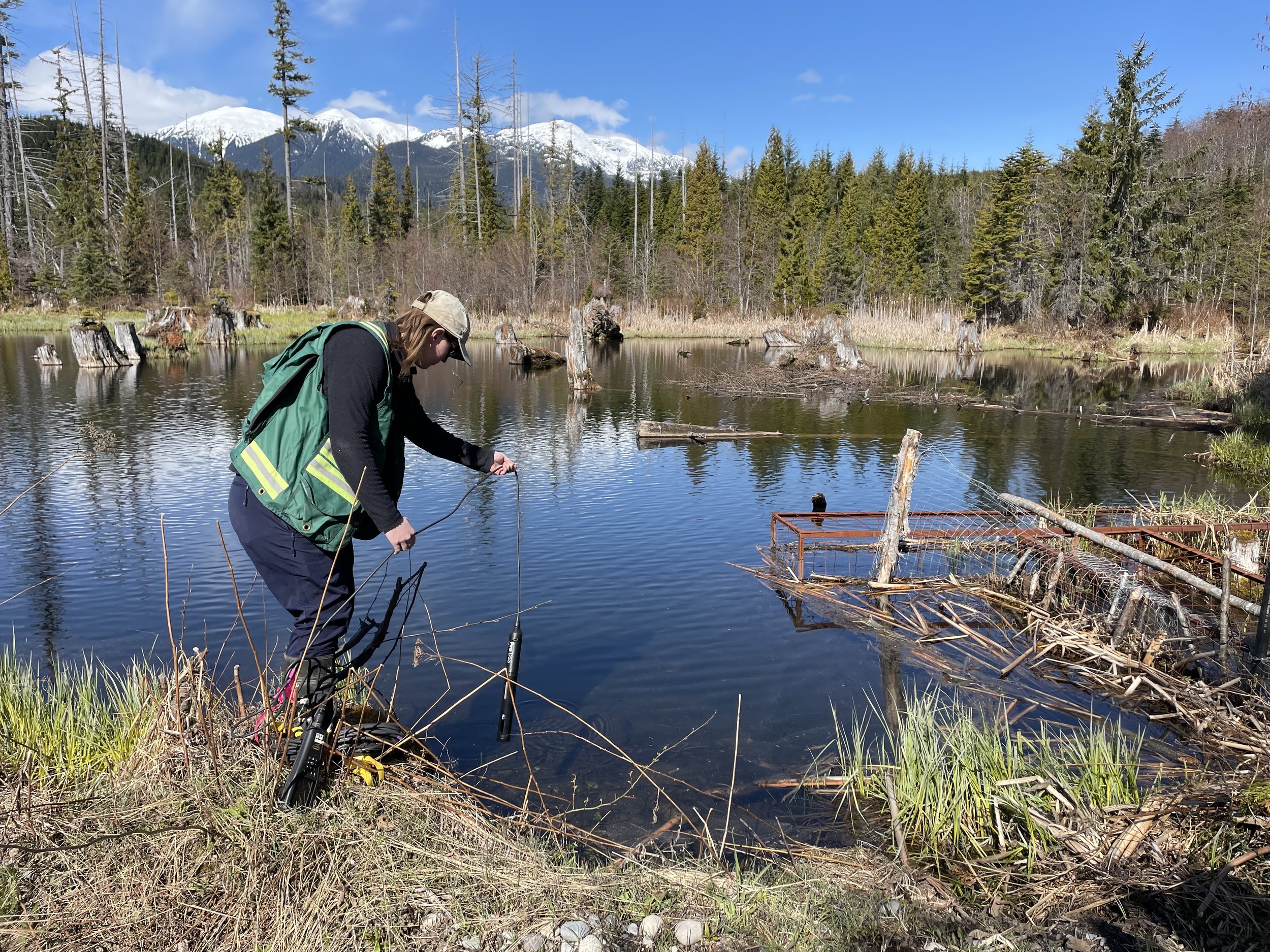
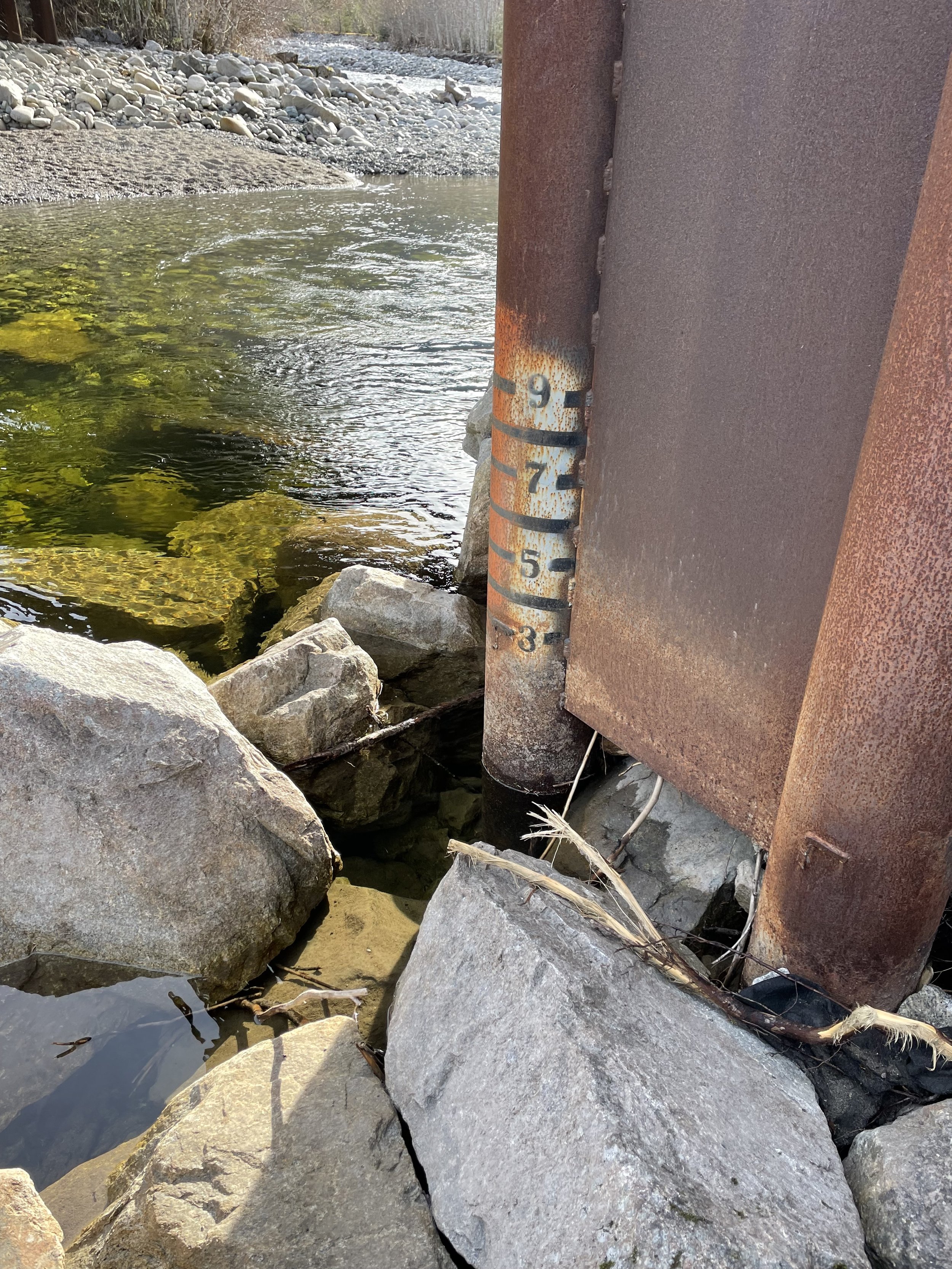

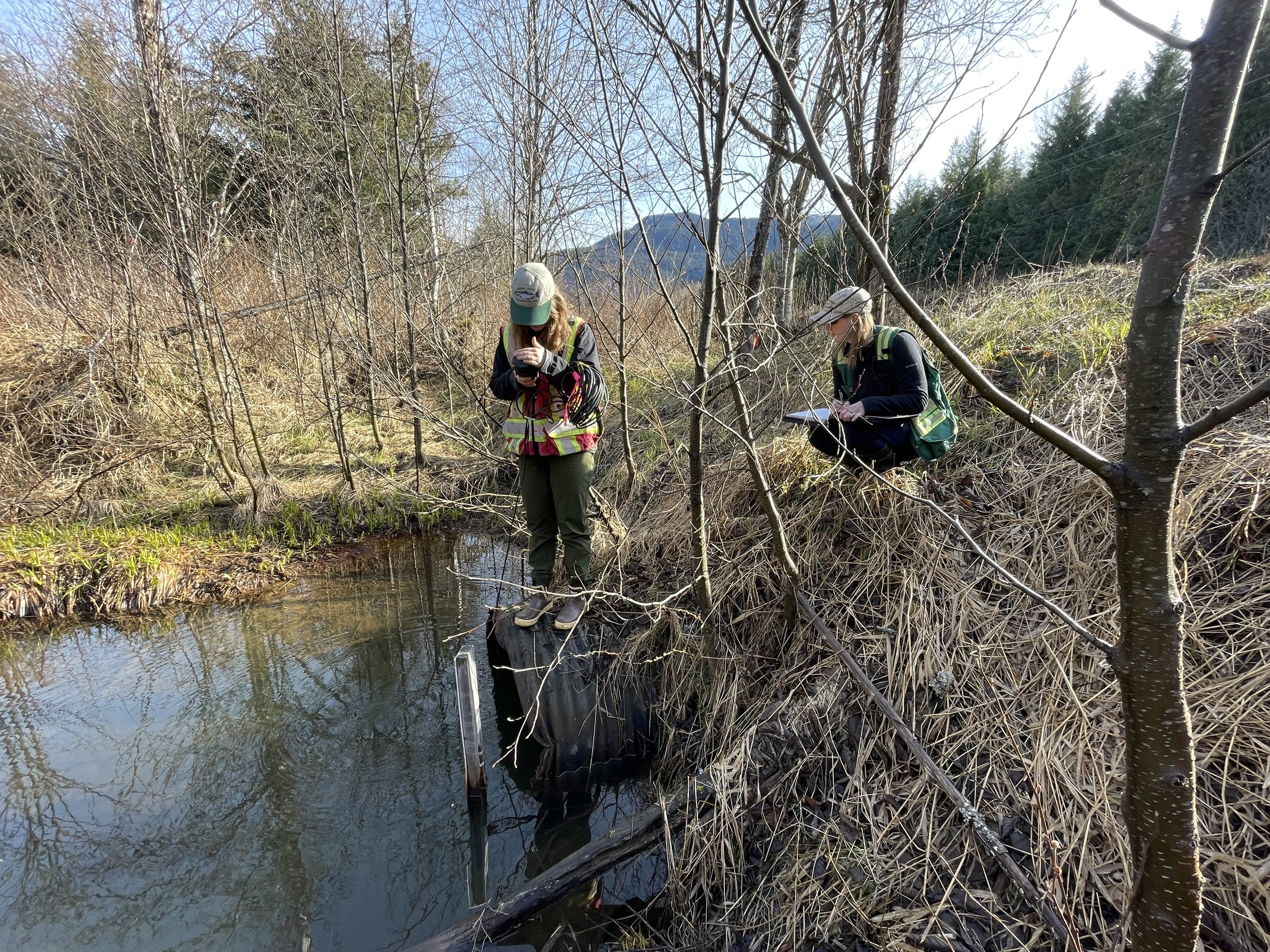
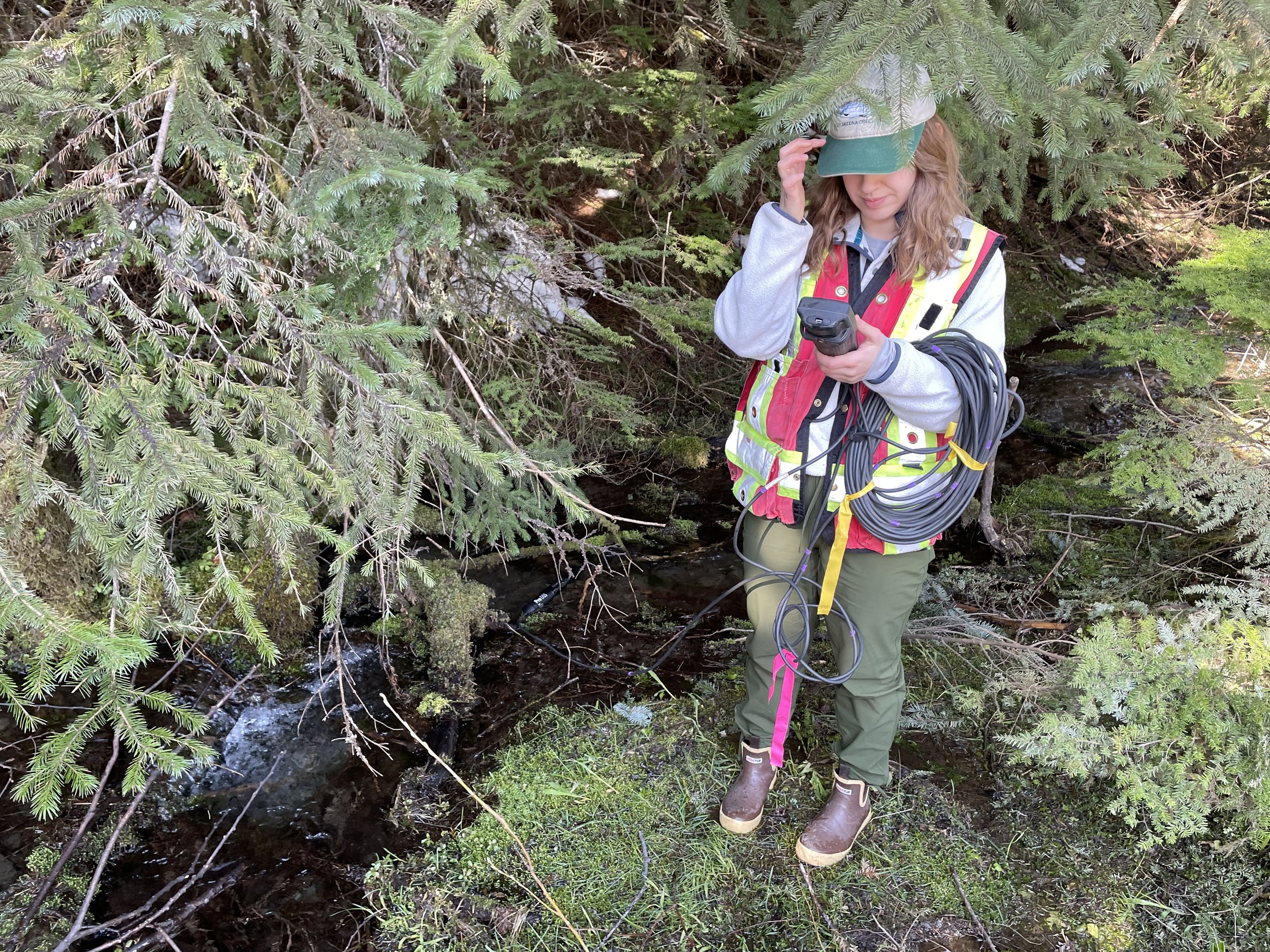
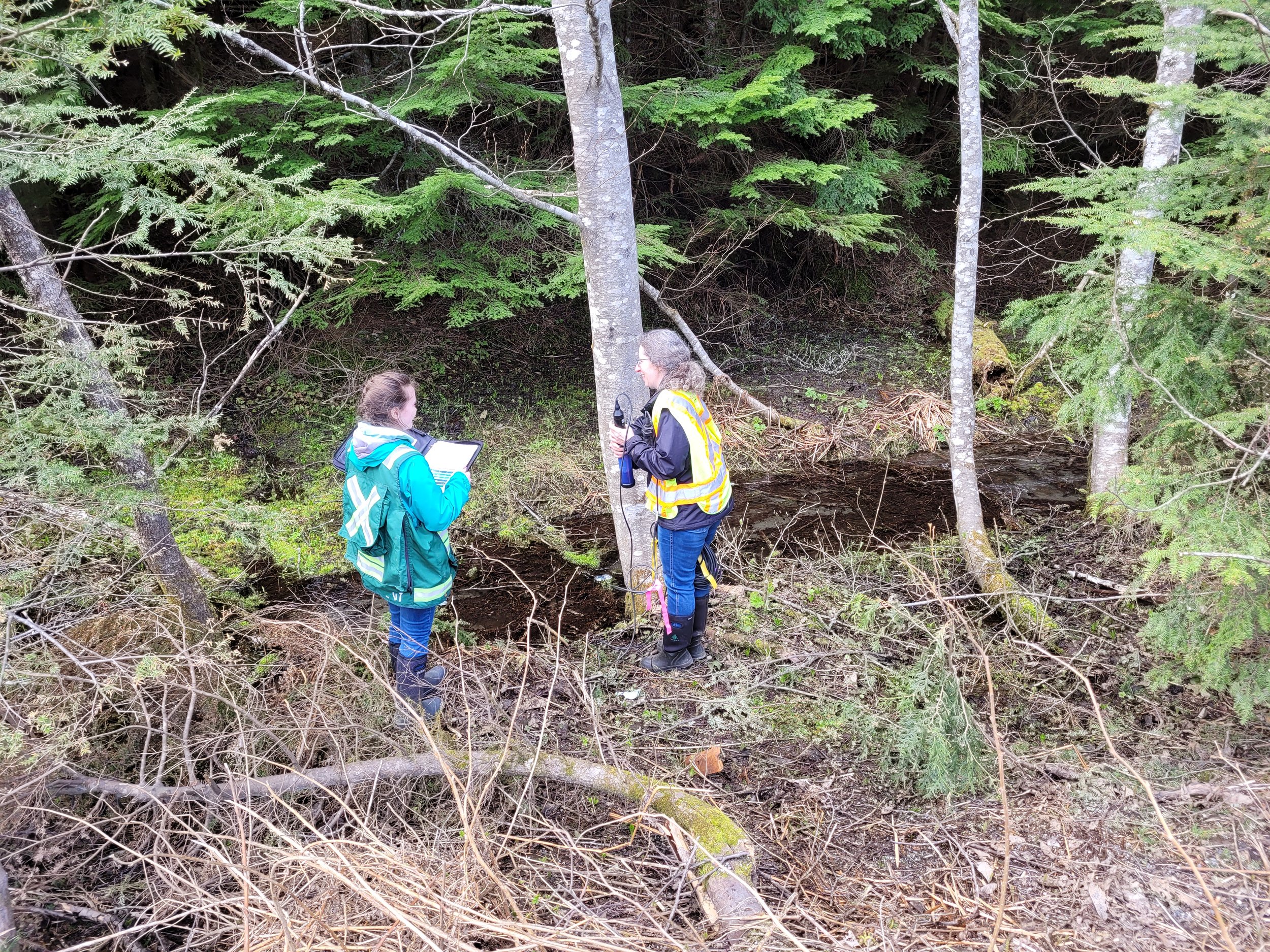
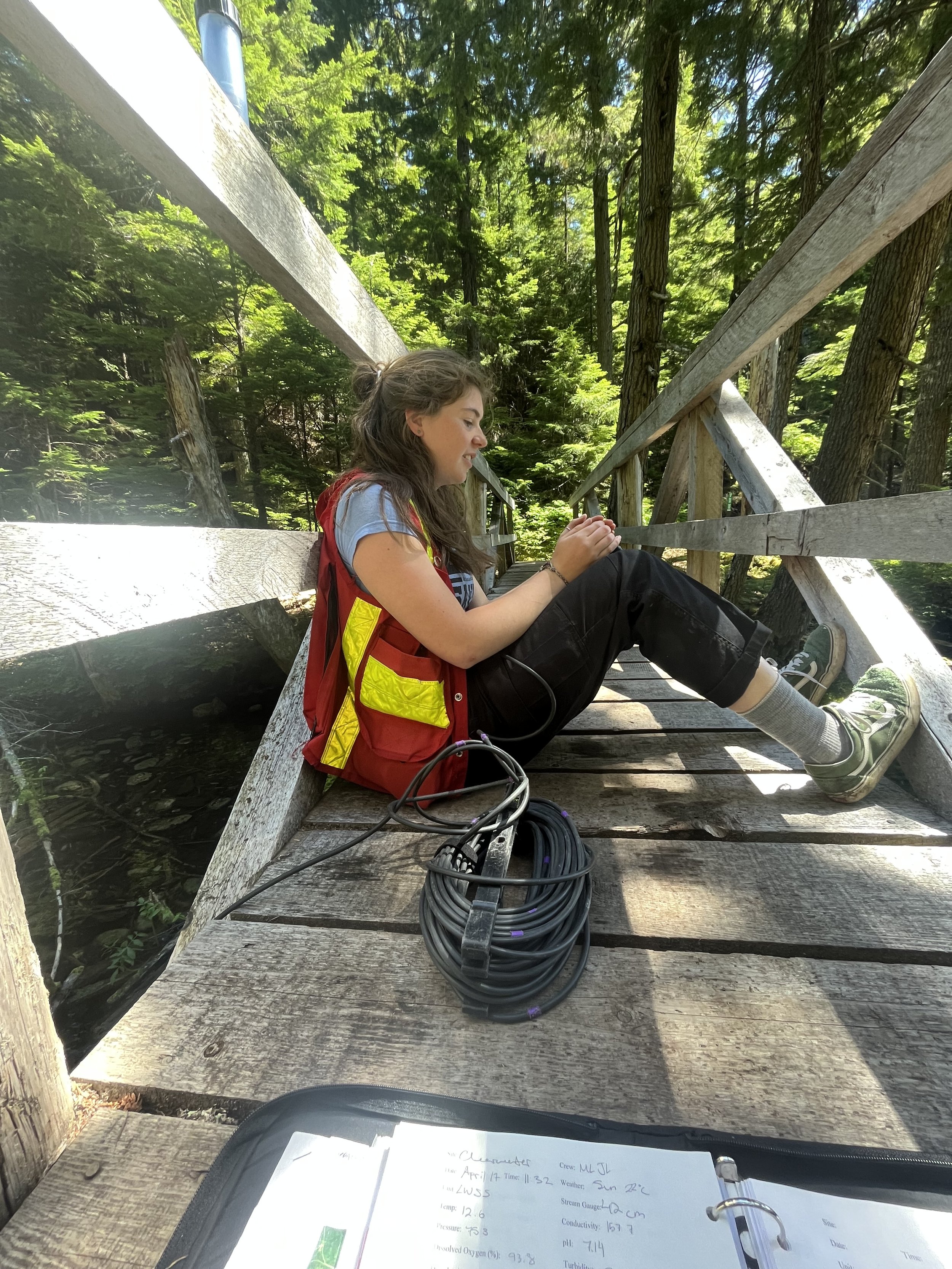
LAKE SAMPLING
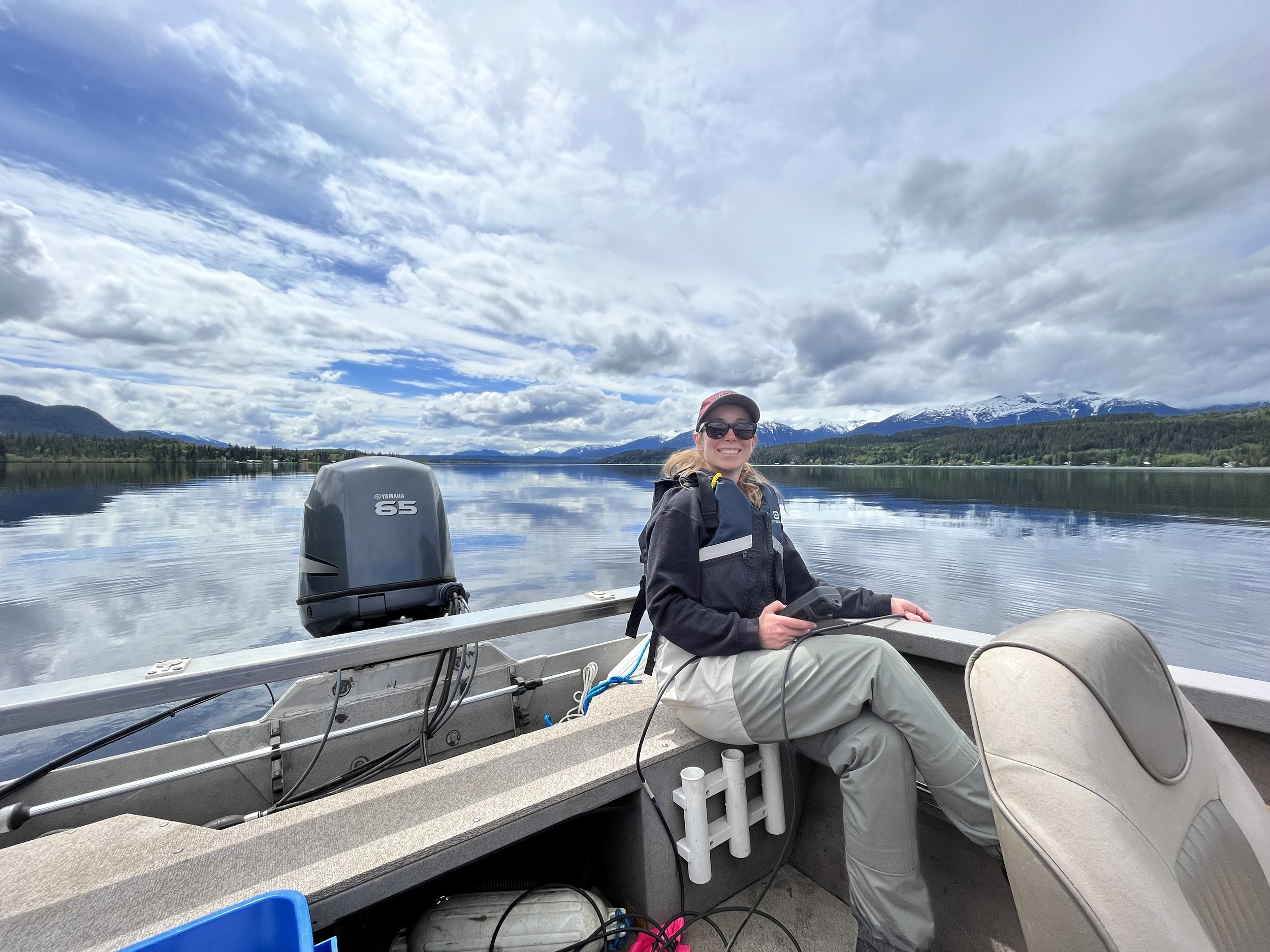
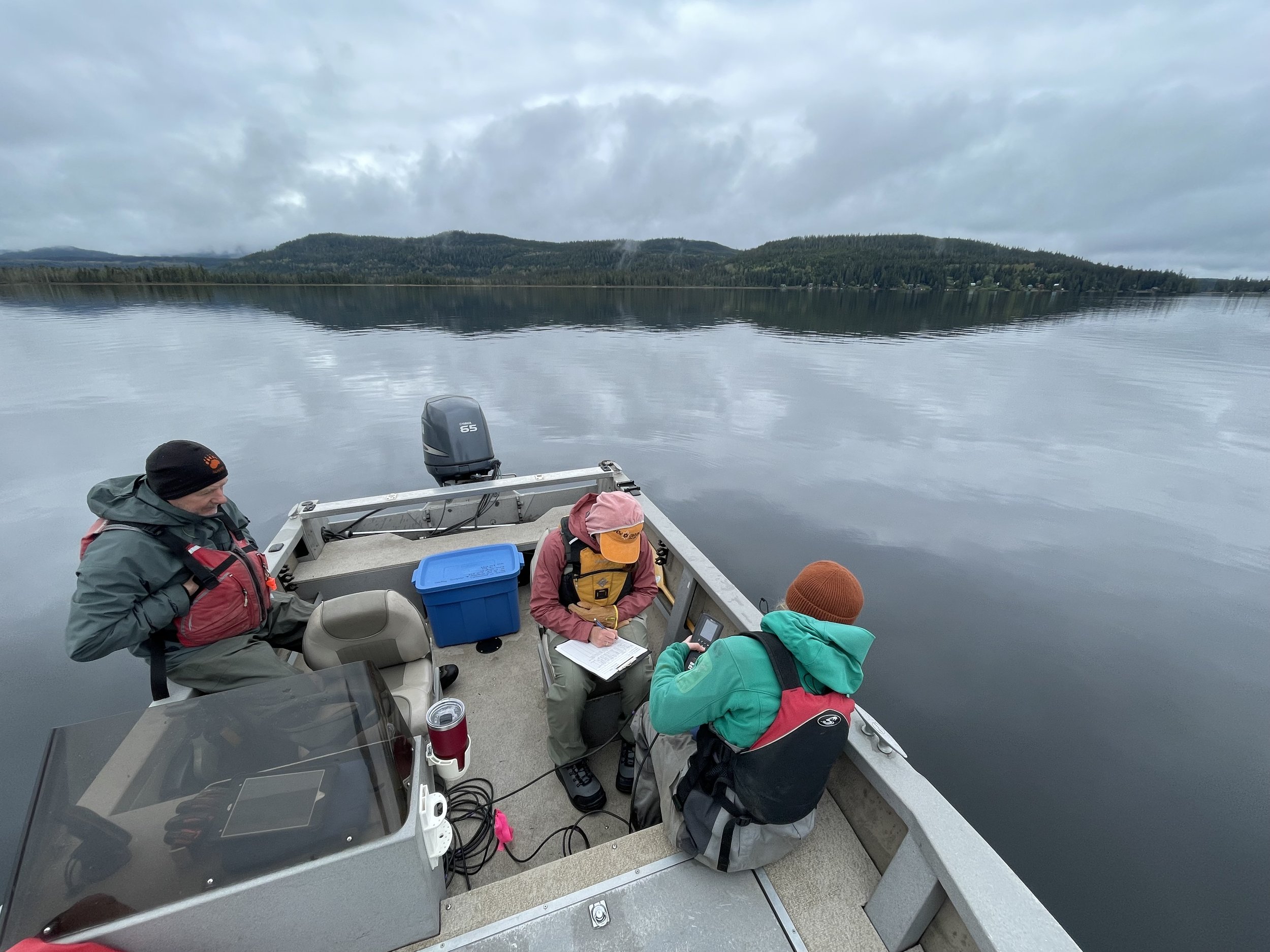
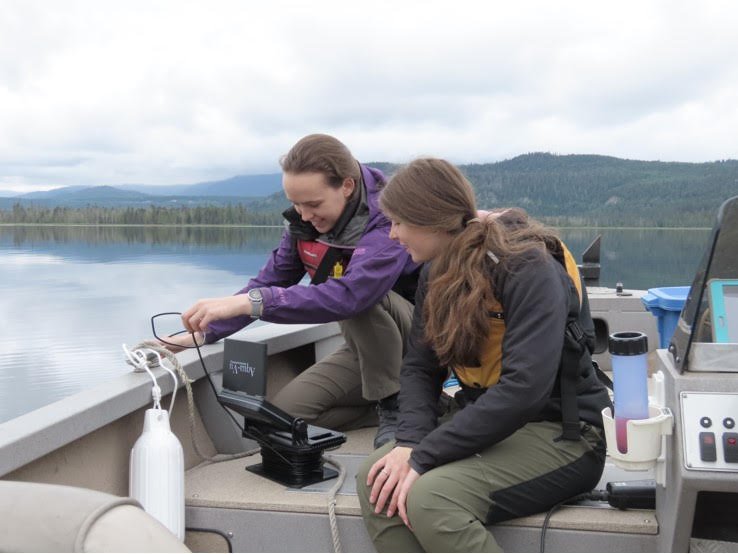
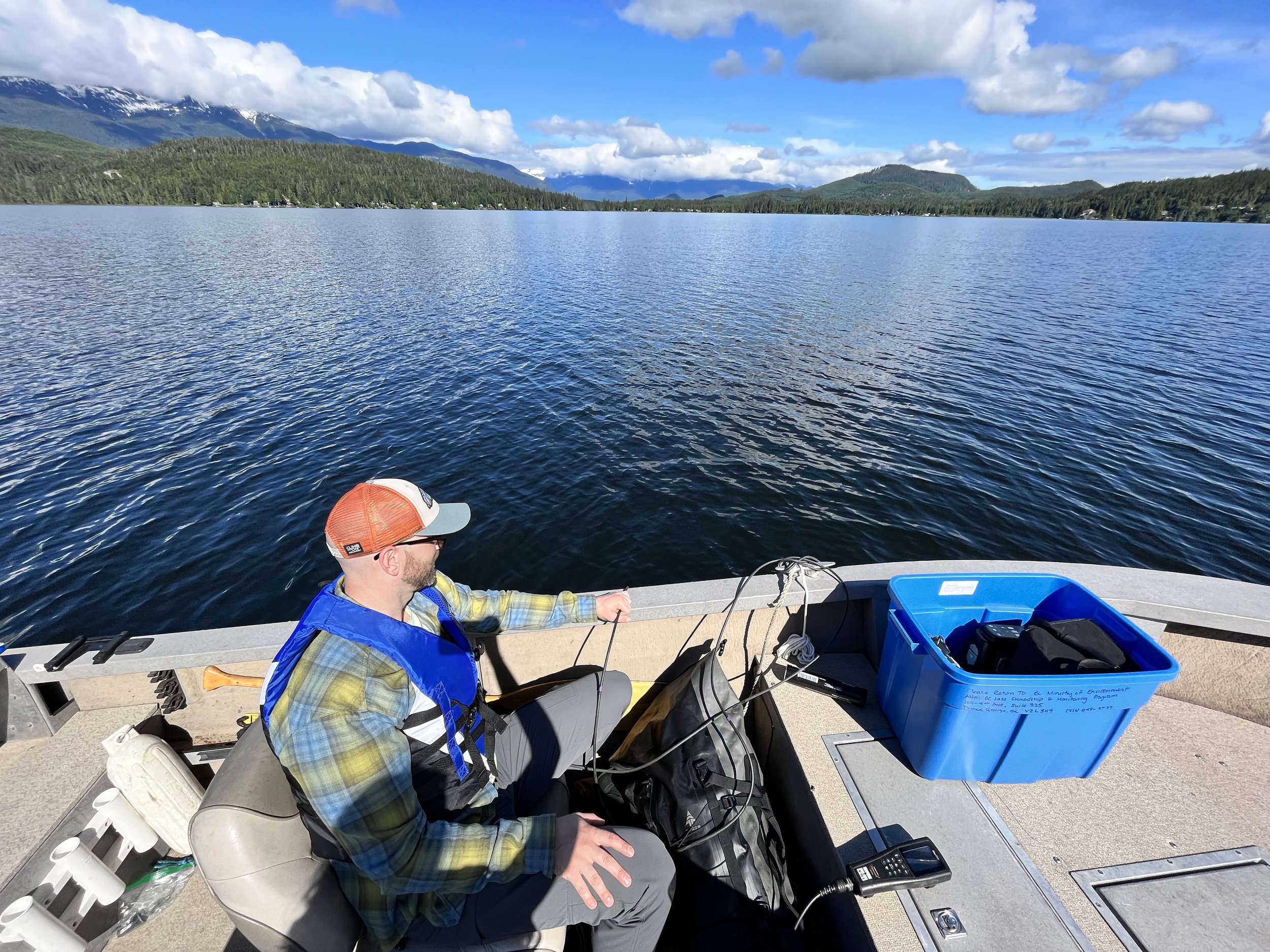
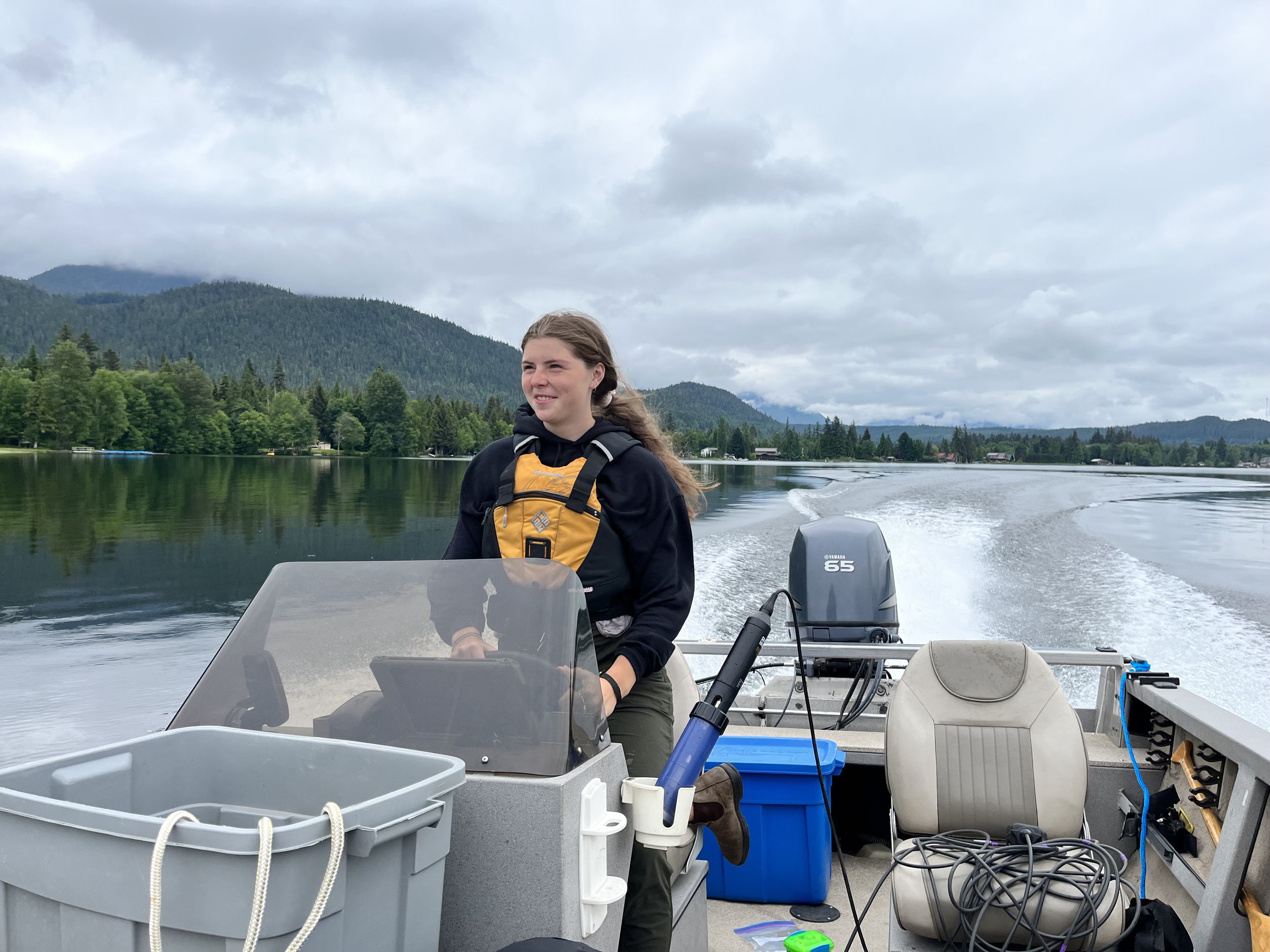
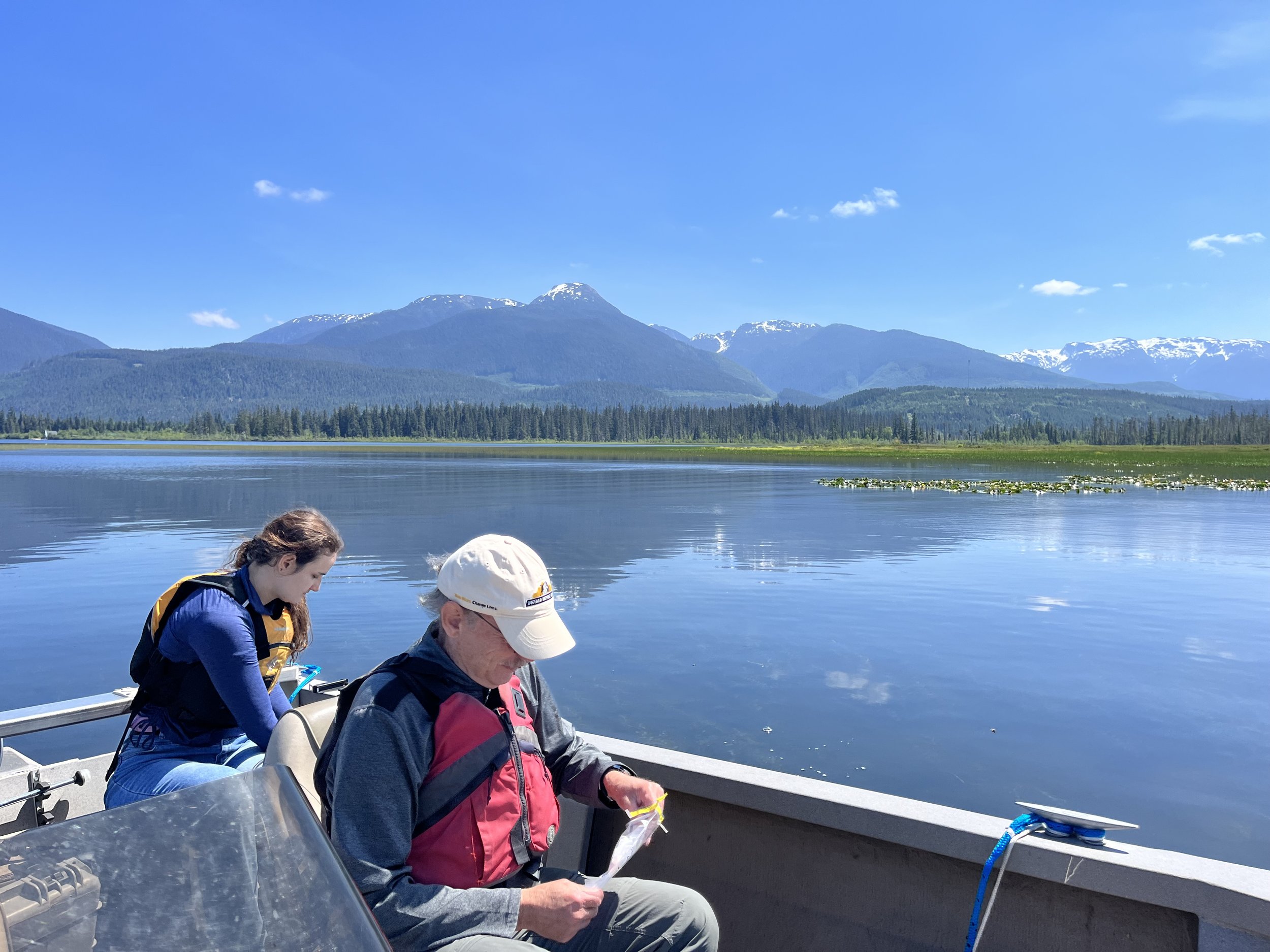

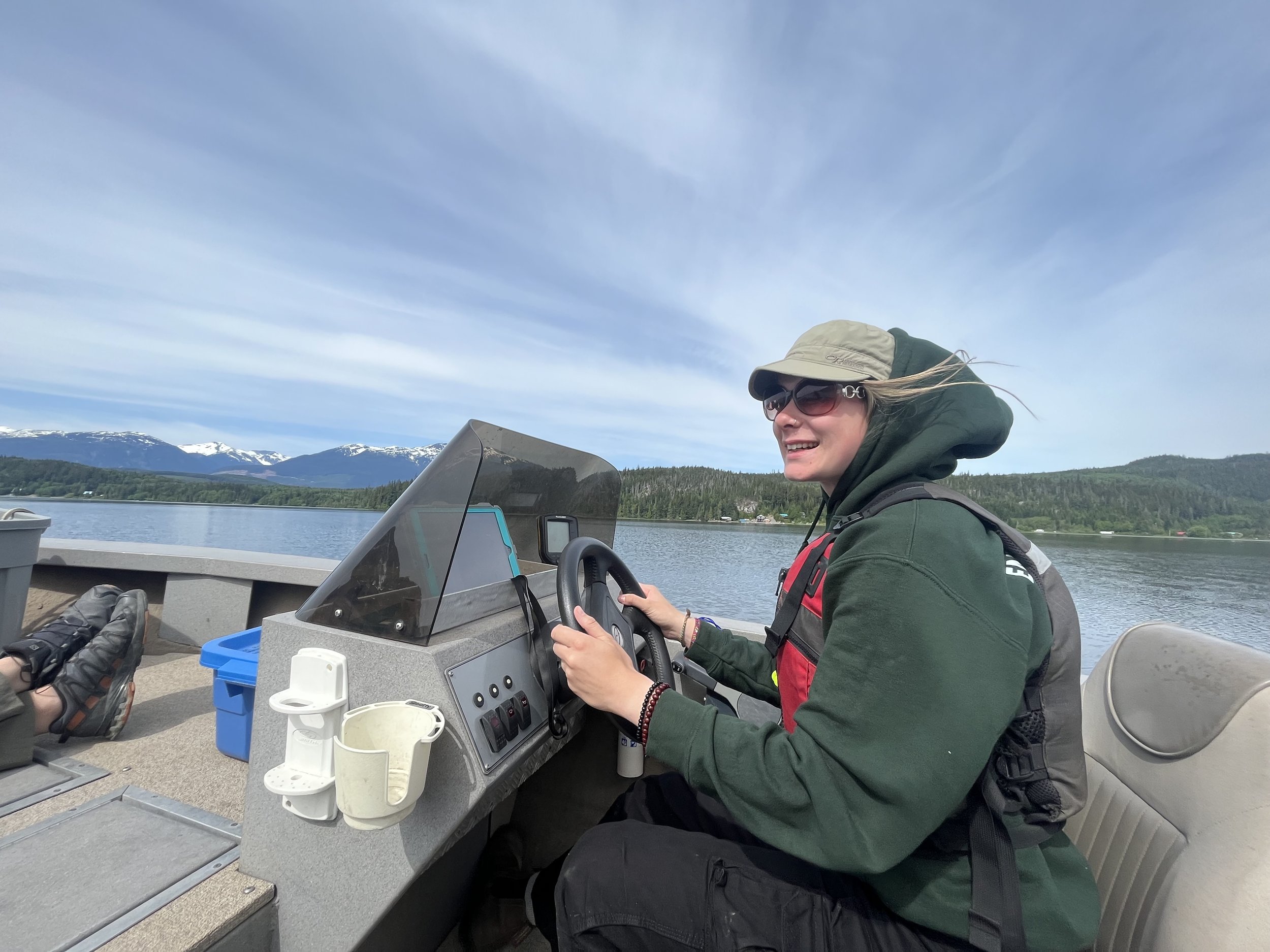
Why measure PH, Dissolved Oxygen, Turbidity, Conductivity and Temperature?
pH: pH is measured on a scale from 1-14. 1-6 being acidic, 8-14 being basic and 7 being neutral. The ideal pH range for fish habitat and streams is between 6.0 and 8.5pH. Water with a pH outside of this range can negatively affect eggs, fry, and aquatic insects.
Turbidity: Turbidity is the measurement of particles in water. Turbidity levels above 10 NTU can negatively affect fish by deteriorating spawning beds, reducing access to food supply, and interfering with gill function.
Conductivity: Conductivity is a concentration of dissolved electrolyte ions in water (more ions=higher conductivity). It is measured on a scale from 50-1500 micro siemens per cm. To support aquatic life you need a range between 150-500. Significant conductivity changes in a stream can indicate presence of pollutants.
Dissolved oxygen: Dissolved oxygen is the availability of oxygen in water. Salmon are negatively impacted by dissolved oxygen levels less than 6mg/L, and consistent low levels may be lethal to fish. Low dissolved oxygen primarily occurs from excessive algal growth and the decomposition of aquatic vegetation.
Temperature: Average seasonal water temperatures below 15 C is optimal for most fish. Temperatures greater than 25 C can be lethal to salmonid species.
Interested in helping out throughout the spring/summer during our busiest water quality sampling seasons?


